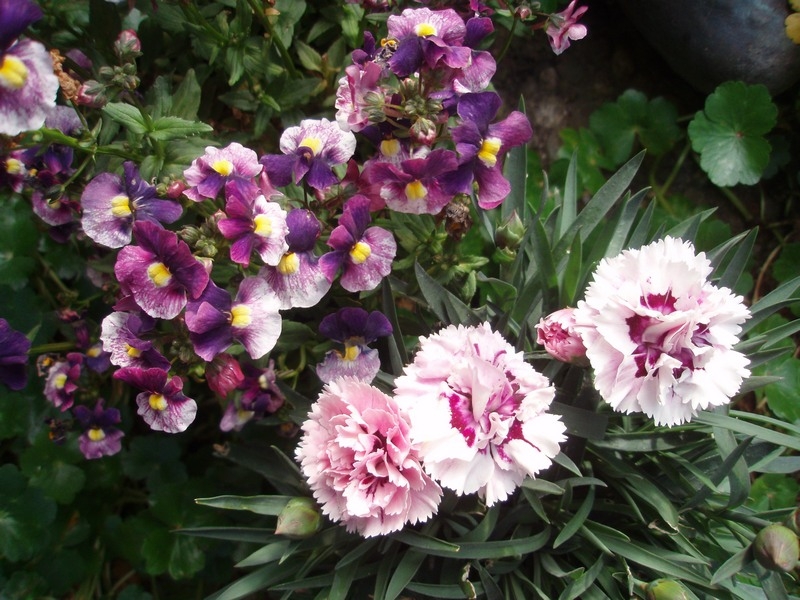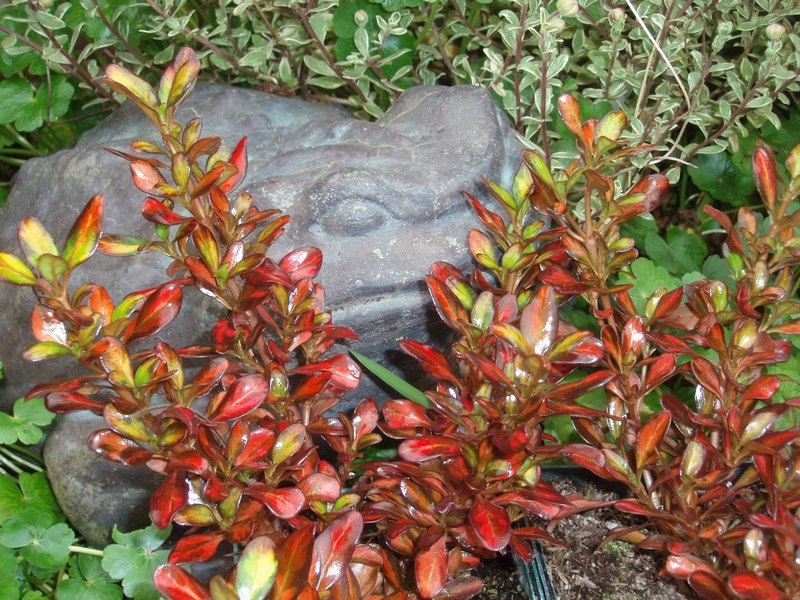You know that growing your own fruit and vegetables can supply your family with fresh tasting and nutritious food. But what if you don’t have much space for a big garden or an orchard of fruit trees. Now days there are lots of 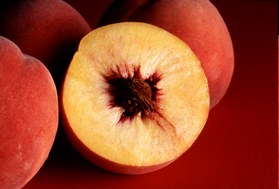 available for smaller yards and containers. Here are some good ones to try.
available for smaller yards and containers. Here are some good ones to try.
Tomatoes are always popular to grow whether in the ground or in pots. Bush types don’t grow as large as vines. If you like large size tomatoes, plant Bush Beefsteak and you’ll be harvesting clusters of delicious 8 oz. tomatoes in just 62 days. A half wine barrel can house a taller tomato like the ever popular Sungold . Small gold-orange cherry tomatoes ripen early and are oh-so-sweet. You’ll plant these every year after you’ve tasted one.
Zucchini lovers might try the semi-vining Raven variety which won’t take up as much space as a traditional type. These plants bear black-green, white flesh fruit with a mild sweet flavor and are very tender. If you have a little space to spare grow the round French heirloom squash, Ronde de Nice. Jade colored zucchini produce over a long period. Harvest the fruit when they reach golf ball up to baseball size. They are sublime grilled or try them stuffed. They are unique in the garden and wonderful in cuisine. A tip to encourage pollination when squash or melons bloom is to pinch off leaves covering the blossoms in order to give pollinators a clear path to the flowers.
Herbs make good additions to the smaller garden, too. They can be kept compact with frequent pinching as you harvest sprigs for cooking. They also attract beneficial insects to the garden. Oregano, chamomile and fennel are good insectary herbs.
Dwarf fruit trees can also find a place in the smaller garden. They can be grown in large pots or half barrels on the deck, too. Dwarf Garden Delicious apple is self-fertile and bears at a young age. Greenish-yellow skinned fruit with attractive red color ripens in late September into October. They grow to 8-10 feet at maturity.
Compact Stella cherry is also self fertile and is a good pollinizer for all sweet cherries. The fruit is large, dark red or nearly black. Firm, sweet, dark red flesh has good flavor and texture. Stella cherries grow 10-12 feet tall and bear at a young age.
If it’s almonds you crave for your patio or mini-orchard, plant a Dwarf Garden Prince almond. This compact 10-12 ft tree blooms mid-season with beautiful pale pink blossoms. Dense attractive foliage and good quality sweet almonds make this tree a nice addition to any garden.
A patio-sized peach for smaller yards is the Dwarf Southern Flame. Large, yellow, aromatic freestone peaches are firm, crisp and melt in your mouth. Tree height is just 5 ft and the fruit ripens early to mid July.
Don’t let lack of space stop you from enjoying fresh fruits and vegetables this year.

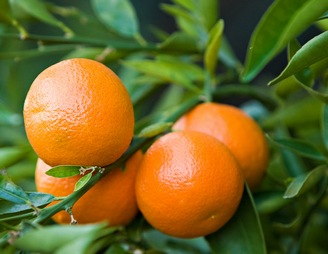 p your landscape? Plant a dwarf citrus. They grow to only 8 feet so fit into small spaces. Plant in a spot that gets full sun and has well drained soil. Citrus are slow growing and do great in containers, too.
p your landscape? Plant a dwarf citrus. They grow to only 8 feet so fit into small spaces. Plant in a spot that gets full sun and has well drained soil. Citrus are slow growing and do great in containers, too. et) after they have flowered and started to set fruit.
et) after they have flowered and started to set fruit. 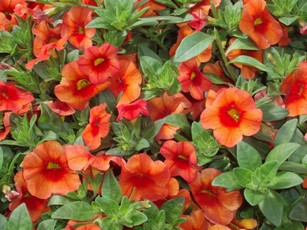 h Seeds has been developing and growing seed in Guatemala for 40 years.
h Seeds has been developing and growing seed in Guatemala for 40 years. 